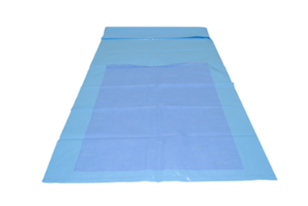17/05/2023
ByWinner Medical
 12442
12442
 Event
Event
This article discusses the aseptic technique, its importance, and how it happens. It's worth the read if you want to learn more about sterile surgery and sterile tools such as sterile surgical drapes.

What is Aseptic Technique?
The aseptic technique is a series of preventive measures against microorganisms and their routes of infection. Keep your surgical area clean and free from bacteria or other contamination to make it much easier to heal quickly and avoid any potential complications.
The contents of the aseptic technique include sterilization, disinfection method, and operation rules. Aseptic surgery requires using a sterile operating table and a sterile instrument cart and laying a sterile sheet; the table area belongs to the sterile area.
Why is it important?
The aseptic technique is vital for several reasons.
Firstly, it helps to prevent the spread of infection. If you're unlucky enough to contract an infection during surgery, having an aseptic technique in place will help limit the problem's extent.
Secondly, you control the risk of complications by keeping your surgical area clean and free from any bacteria or other contamination. Finally, the aseptic technique helps to ensure that your surgical results are as good as possible. Avoiding potential complications maximizes the chances of achieving outstanding outcomes.
How does it work?
The aseptic technique helps to reduce the spread of infection by:
1. Using sterile surgical instruments
2. Using sterile equipment, such as cabinets, gowns, and gloves
3. Following sterilization guidelines, including using autoclaves and gowns manufactured by Winner Medical.
4. Preparing patients before surgery (such as taking blood cultures)
5. Handling surgical instruments sterile.
Conclusion
The aseptic technique is an important part of any medical setting, especially in the dental office. By following proper aseptic techniques, you can reduce the risk of cross-contamination between patients and help to protect both your staff and the patients you are treating.